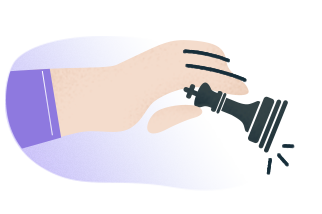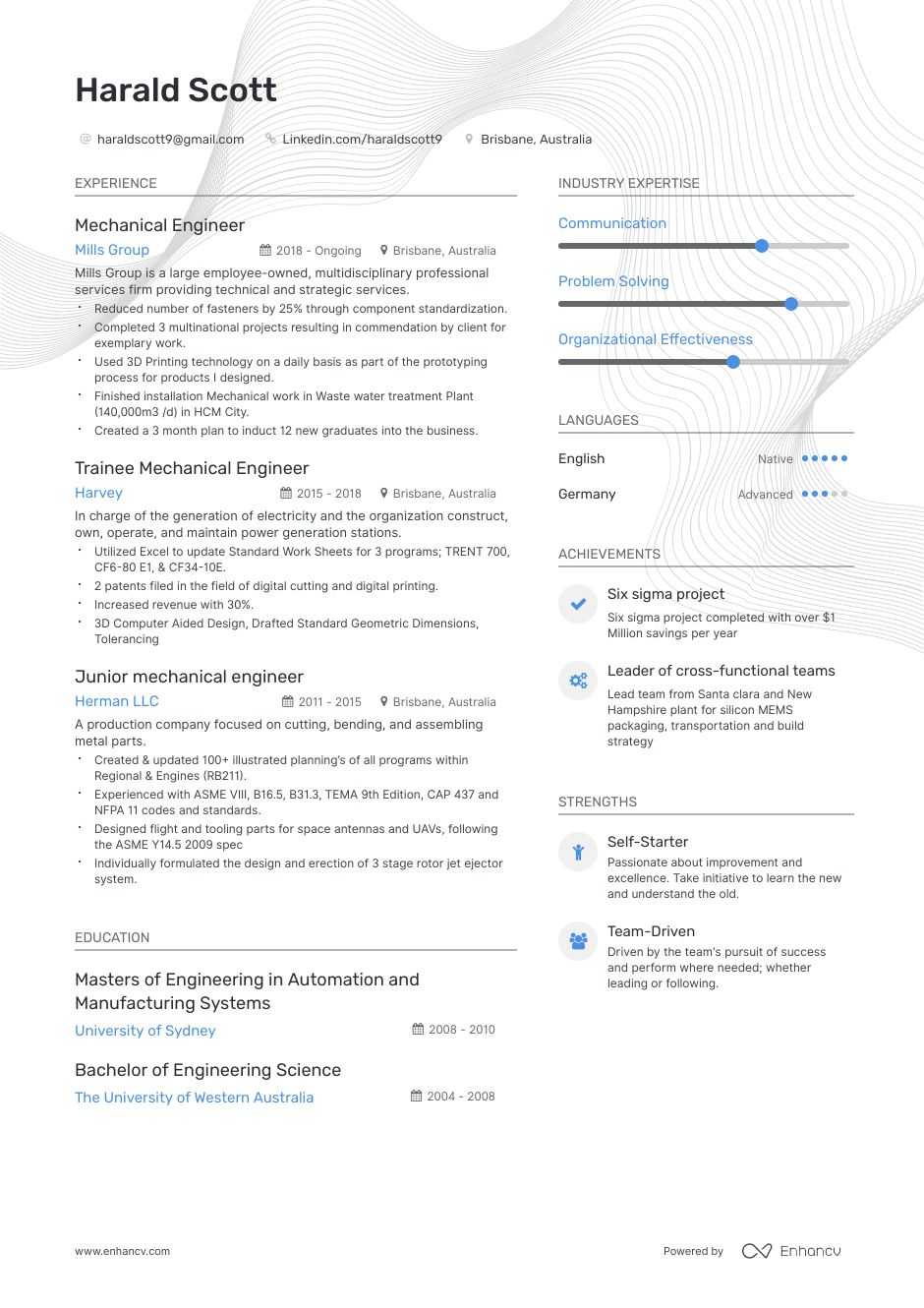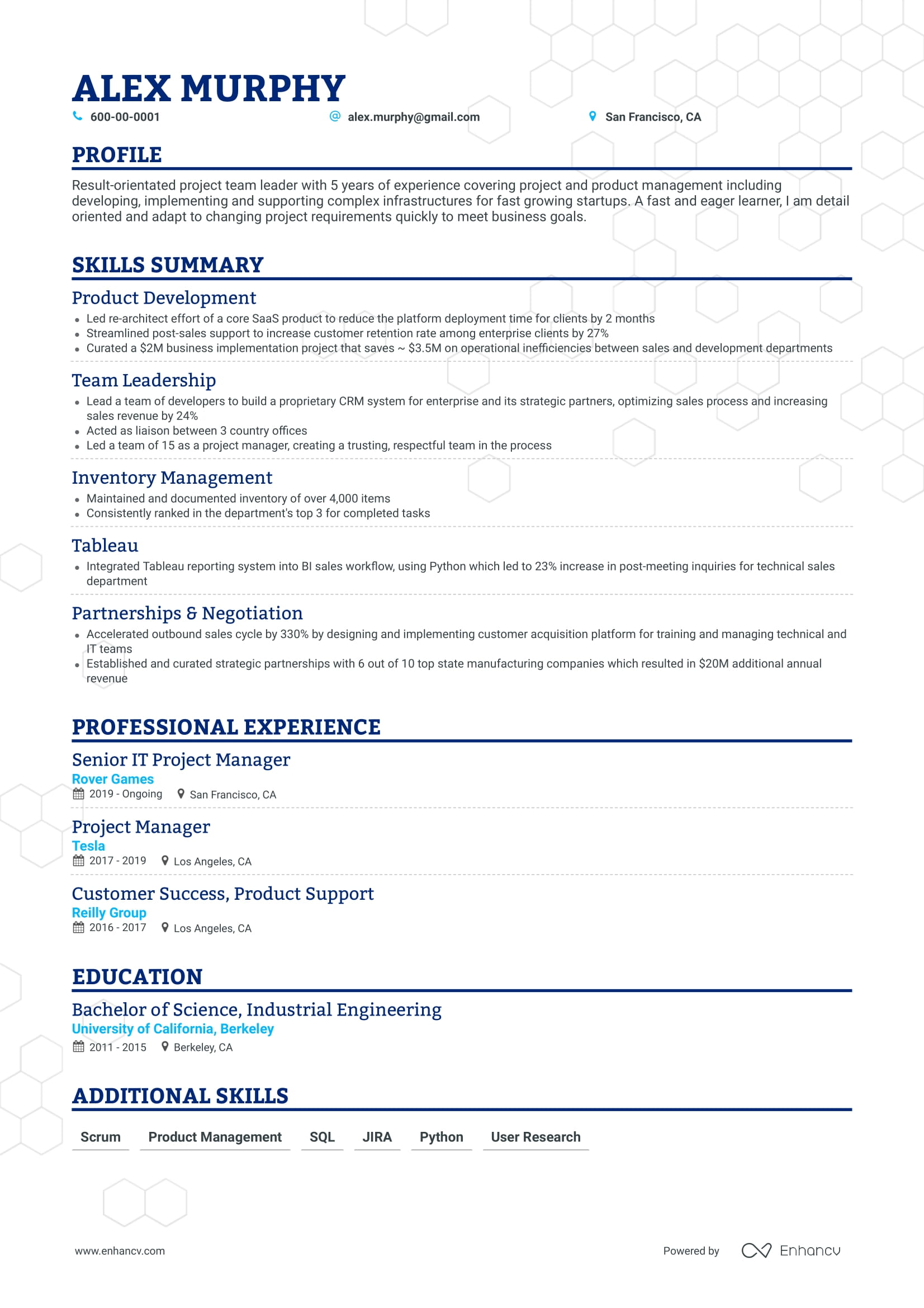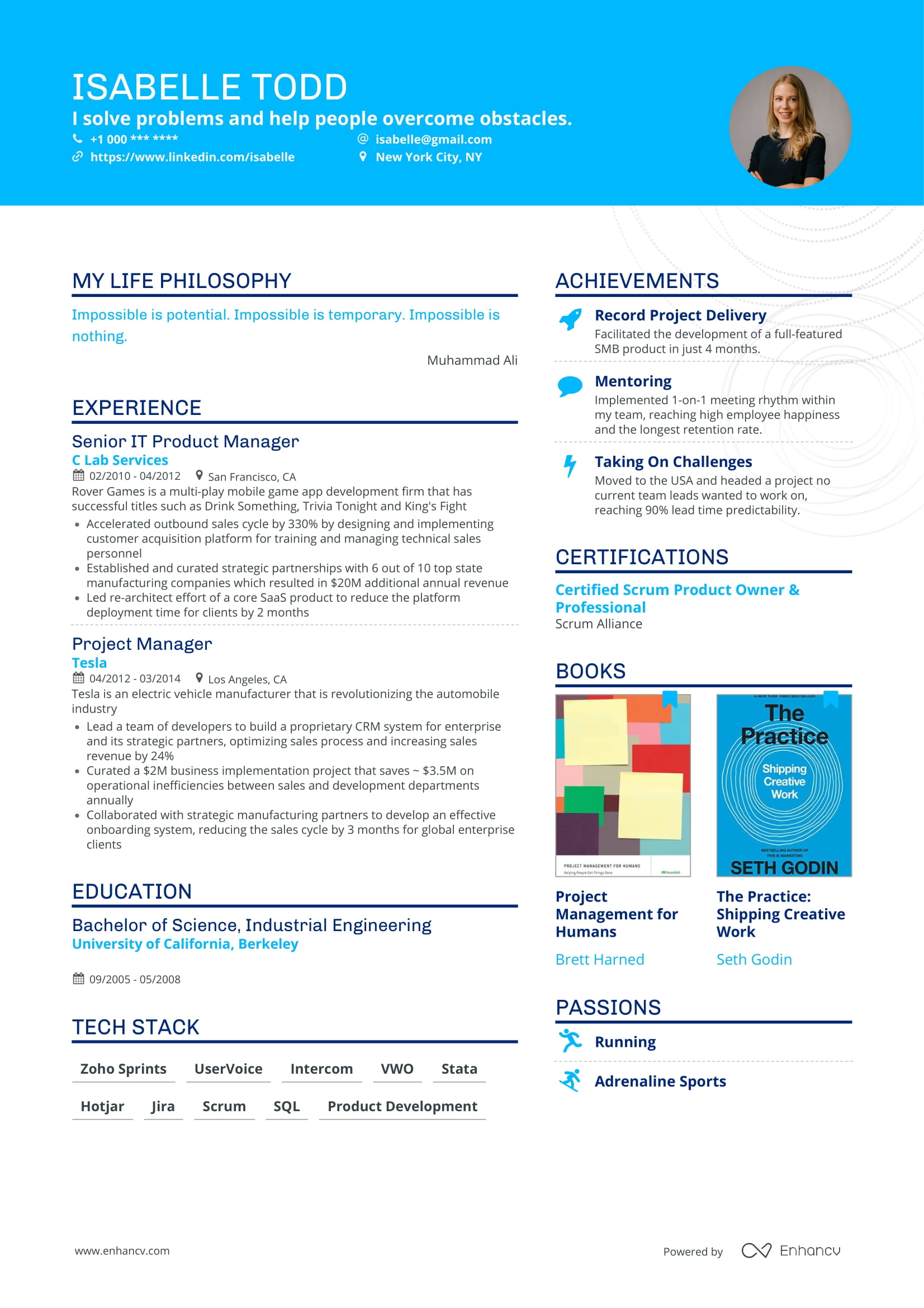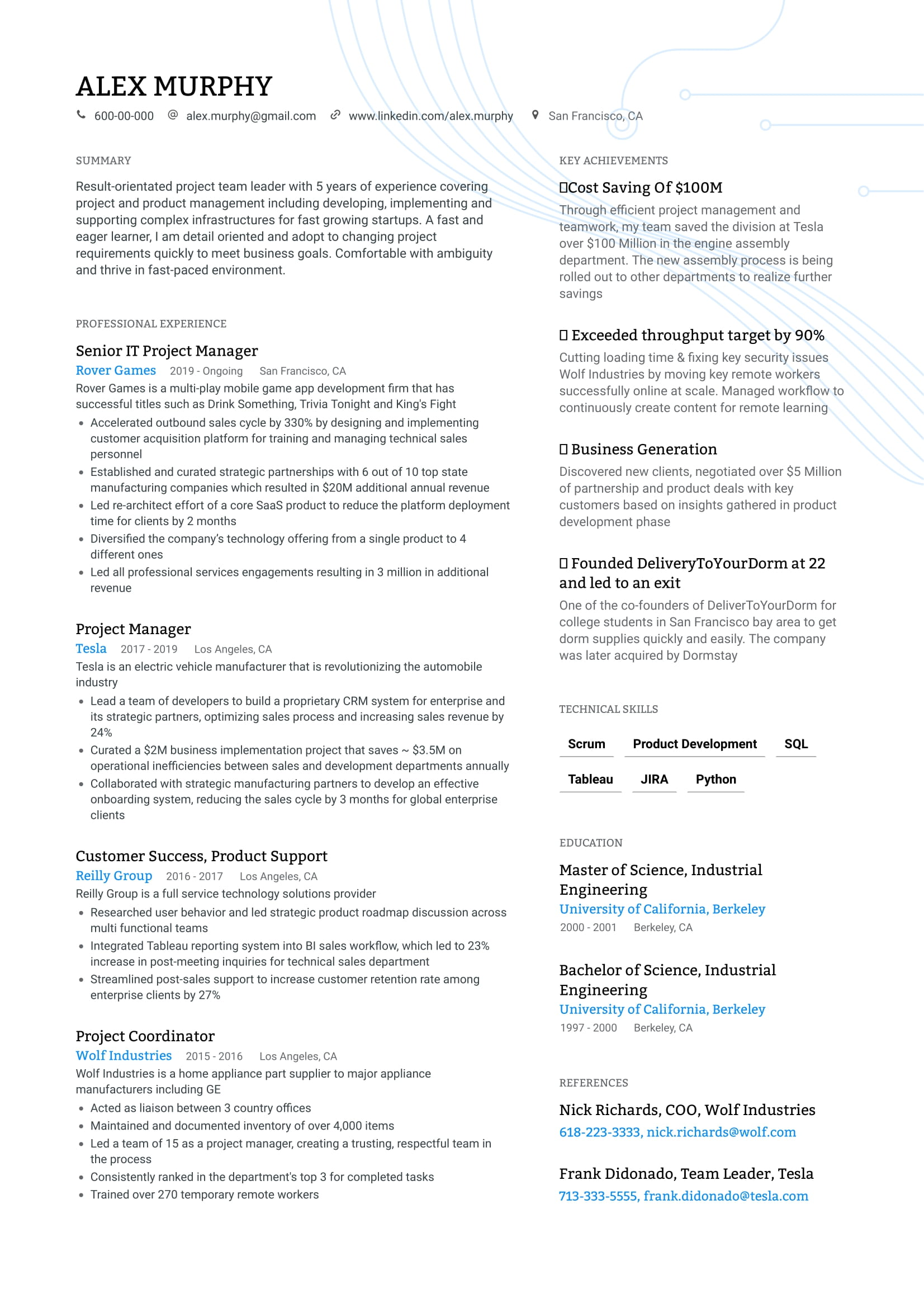Example Mechanical Engineer Resume - Browse more resume templates and build a stand-out resume
When you write your mechanical engineer resume and send it across for a job.
Don’t you wish that the Hagen-Poiseuille equation applied here?
Job applications are just like a turbulent flow, sometimes you land an interview, sometimes you don’t.
And it isn’t uncommon to think that you weren’t selected because you were unqualified. But, there are more factors at play than you think.
Just how viscosity acts in fluid dynamics, there’s a variable that impacts your job applications too - your resume!
Especially if you are a mechanical engineer, because the industry has been experiencing limited growth since last two decades.
So, when you see a job, your goal is to send across a mechanical engineering resume that wins without fail.
Now, let’s see how we can create that winning resume.
Here is what we’ll uncover:
- Resume samples that will get an interview 99.999% of the time
- Resume mistakes that’ll get you a hard rejection and how you can avoid them
- Must have resume sections with how to create that hard to beat first impression
- Things you probably would underestimate, but often can be the difference between an interview call and a rejection
First, lets see amazing mechanical engineering resume that’ll be hard to reject.
Mechanical engineer resume sample
How to write a mechanical engineering resume?
As jobs are limited and most hiring managers are a bit conservative about the way they shortlist candidates - the first thing you need to know is what will get you rejected.
The list for “what-gets-you-rejected” is big. But, we cherry picked ones that we saw across 90% rejected resumes:
- No personalization and context to the role displayed in the candidate’s resume
- Bad design that looked inconsistent and incoherent
- Wrong elements highlighted that focused on candidate’s weakness more than their achievements
- Bad resume layout that no one bothered to read through
- Resumes that were too long
- Resume experience that displayed severe vagueness
- Lack of impact throughout the resume
Let’s take a closer look at each of the above causes of rejection of a mechanical engineering resume.
Mistake #1 - No personalization and no context
Most believe that landing an interview is a numbers game, so, they craft generic resumes and send it to 100s of job applications.
It isn’t uncommon to receive a mechanical design engineer’s application for a mechanical maintenance engineer role, and without any context.
To avoid this there has to be a context and motivation for a career change/transition in your resume.
Mistake #2 - Bad design, inconsistency
Reading through bullets with inconsistent margins along with sections that overlap and have no clarity are too hard for anyone. Your resume design should be as clean as your engineering drawings.
Recruiters gravitate towards well designed resume and tend to avoid resumes with poor resume design.
Mistake #3 - Highlighting your weakness
Your resume has to sell you as the best candidate. But, if the highlighted element in your resume is your 2.4 GPA, it’s not going to sell you.
Mistake #4 - Resume layout
More than 95% applicants get this wrong. Get your resume layout right. Make sure to have the right padding, margin, and whitespaces. On top of that, focus on delivering contextual information first, then everything else.
Mistake #5 - Multiple page resumes
Write a resume that’s more than 2 pages, and you’re prepping up for high degree of rejections.
Mistake #6 - Vague resumes
When recruiters see a vague resume, they perceive that the candidate isn’t knowledgeable and even years of experience won’t likely undo that first impression. This is a graduate level mistake that plagues 99% of bad resumes we see in the job market.
Mistake #7 - Lack of impact
Most resumes are just a listicle of duties and some skills. They are written as if someone had a gun to a candidate’s head.
Gear up, time to attend the workshop and turn that lathe machine on. The action starts now!
What should be on a mechanical engineering resume?
- A precise, short and well thought resume header
- A resume summary that is highly impactful and creates a memorable experience
- Professional experience crafted specifically for the role you’re applying to
- A list of your certifications
- A resume skills section
- Your achievements or most proud moments
- Educational qualifications
Adding more sections would reduce the impact and clutters resume design. Any information that is not as impactful as the rest of your resume isn’t worth adding.
Now, how would you arrange these sections in your resume?
Mechanical engineering resume layout and length
We ran two different studies on resume layout and resume length with hiring managers to see their preferences.
To maintain consistency within these tests, all resumes had the same level of skills and experience. But, were tuned to fit different layouts.
Here’s what we found after running our test:
- Functional resume layout: 90% recruiters rejected candidates that used these layouts
- Reverse chronological 1 page layout: Only 13% displayed a preference for other type of resume layouts *
- Reverse chronological 2 page layout: 30% rejected candidates with this layout**
- Reverse chronological 2+ pages: 80% of the candidates faced rejection
- Creative resume layout: 100 % of candidates who created aesthetically bad resumes faced straight rejections, 55% of candidates who had considerably good resume design got rejected too.
- Hybrid resume layout: Only 4% of the candidates faced a rejection with a Hybrid resume layout
* The preference was displayed in favor of graduate level mechanical engineering resumes
** Recruiters expressed that the resume could’ve been shortened to one page
Now that you’ve a resume format, let’s start filling the “blank paper”.
Add a header to your mechanical engineer resume
While it’s just a tiny section on your resume, not doing it right can hand you a straightforward rejection.
And a good vs bad resume header is just like how you’d judge an isometric views vs a 3D drawing. One projects the truth and provides the right information at a mere glance, the other forces you to think through and leverage your imagination.
Bad resume headers and 3D drawings share the following in common:
- Difficult to find the right information at a glance (too cluttered to pick the right thing)
- Easily mess-up important details (e.g. get the contact number or email wrong)
Getting rejected just because a hiring manager couldn’t find the right contact is the worst thing you can do. Keep the header neat. And when you do, make sure your email looks professional too (nocooldude1990@yahoo.com).
Here is a good and a bad example of resume header
How to write a Mechanical engineering resume objective?
First of all, know that a resume objective has a very specific purpose:
- Either it shows that you are an entry level graduate and what you want to achieve after joining an organization
- Or, it shows that you are an experienced professional seeking a new role that you’ve certain skills and motivation for
However, for experience mechanical engineer resumes it is preferable to keep a resume summary in place of resume objective.
2 Mechanical engineering intern resume sample objective
Entry level Mechanical engineering intern resume objective examples
Writing a professional mechanical engineer resume summary (with examples)
Writing a resume summary can be hard.
Especially when you’ve a ton of experience, achievements and skills to show.
And, that’s where writing your resume summary and experience gets extremely complicated.
Our goal is to make sure that you aren’t limited by your creativity when you write these sections.
We will follow the STAR Method to write these resume sections.
STAR stands for Situation, Task, Action, and Results. When put in context to a resume summary or experience, they demand you’ve the following:
- Situation - What was the situation you/ your previous employer faced?
- Task - What tasks were involved in that situation?
- Action - What actions did you take?
- Results - What were the results of these actions?
Let’s go through a couple of mechanical engineer resume summary examples to see STAR framework in action.
mechanical design engineer resume summary examples
2 entry level mechanical engineer resume summary samples
Senior mechanical engineer resume example [summary]
Notice how following STAR method dramatically increases the impact that your resume summary delivers.
The next most important thing on your resume is your experience.
Impactfully writing your mechanical engineering resume experience
A good way to start writing your working experience is by embedding STAR deep into it.
Don’t simply listing your duties as a bullet list under work experience.
Make sure every bullet in your experience demonstrate an impact.
That way, you won’t list what you did, you’ll rather list what you accomplished.
We’ve a few examples below that’ll show you the difference between good and bad resume experiences for a range of Mechanical engineering resumes.
Carefully notice the difference STAR framework makes.
Mechanical quality engineer resume experience
Mechanical design engineer resume experience samples
Senior mechanical engineer resume experience
2 Mechanical Maintenance engineer resume samples [Experience]
Percentages, how you solved a problem, and revenue are the type of signals that hiring managers want to see in your resume.
Also, if you have any experience of implementing or managing predictive maintenance - put that on your experience too.
The next thing to go on your resume is your skill section.
10 Top mechanical engineer skills [resume] in demand
- CAD skills: AutoCAD, Solidworks
- Technical Reporting and Presentation
- Fluid Flow Analysis
- Production Planning
- Maintenance Management
- Prototyping, Project costing and analysis
- Machining and Welding: CNC, Lathe, mills,etc
- Computer Simulation and modelling
- Programming skills: Matlab, C++, Python
- Data Analysis
Most of these skills are for mechanical engineer resume with experience.
Now, what would you do if you are writing a mechanical engineering resume without any experience?
Here are some skills that employers in North America are scouting in entry level mechanical engineer resumes.
An example entry level mechanical engineering resumes skills
Research and projects section on a mechanical engineering resume
If you’ve very little experience (or none) to show, you should leverage your projects and research work to make an impact.
This also applies if you are a mechanical engineer aiming to get into R&D positions - research work and projects are a must have. Let’s put your publications, fellowships and projects to work.
Here’s an example
List your achievements on your resume
Won an IMR Manufacturing award? Ramped up manufacturing production from 120 cars/day to 400?
These achievements are not only important within your resume experience, but you need to repeat them just a bit more within your resume.
But exercise caution on adding anything that you won’t list on a wall.
How to show your education on your mechanical engineering resume
Adding education section in your resume can be a double edged sword. We’ll talk about it later, but let’s first look at what most people typically do. It isn’t uncommon to see a highly experienced candidates list their education like this
We’ve heard arguments from both sides. Candidates felt that adding educational details make them more relevant to the job. Which while brings one solution, creates ground for other problems.
First, after numerous years of experience, education has little relevance which fades over time and it therefore wastes hiring manager’s time.
Second, it takes up too much of space, which clutter your resume design. Both of them reduces the impact your resume would create.
GPA of 2.4 is negative point to have here, and might reflect negatively on your resume despite having a professional working experience.
The right way to add your education is to be precise and only add more details if you are writing a mechanical engineering resume with no experience.
The right way to list education on an experienced mechanical engineering resume is
That was the final thing you needed to learn in order to perfect your resume.
But, before we end, let’s summarize.
Key takeaways
- Pick a hybrid resume layout
- Make sure to add the right contact details to your resume header
- Write a summary that displays competence and engineering passion
- Adjust your resume experience for relevance and tune it to deliver an impact
- Don’t forget to list your engineering skills in your resume
- Mention projects and research work to your resume
- Place your achievements in a separate section
- Add your education in the right way
Our hopes are high on you creating your best resume with us!
